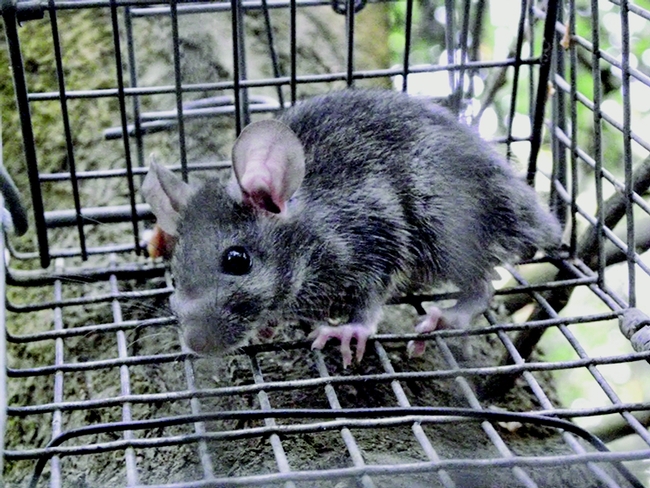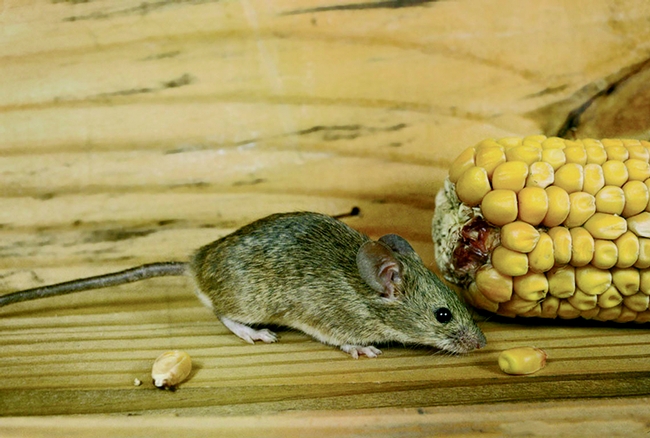
[From the April 2015 issue of the UC IPM Retail Newsletter]
Norway and roof rats, as well as house mice, can be commonly found in urban and rural homes. Many rodents, particularly house mice, enter structures during the winter months. Rats (Figure 1) and mice (Figure 2) can cause damage resulting in large economic losses and are also known to pose health risks to people.
With the implementation of recent legislation nationwide restrictions on rodenticide use have become much tighter. In California, pesticides registered for use against rodents fall into three categories:
- first generation anticoagulants (FGAR),
- second generation anticoagulants (SGAR), and
- non-anticoagulants.

As reported in UC IPM's September 2011 issue of the Retail IPM newsletter, although the chemical options for effective and safe rodent control have been reduced, there are still many options for residents to efficiently control rat and mouse outbreaks. It is extremely important to be proactive, rather than reactive, when it comes to rodent control.
Exclusion is the most successful and permanent form of house mouse control and can also be effective when it comes to controlling rats. Advise customers to rodent proof their homes by eliminating gaps and plugging and/or covering openings both inside and on the exterior of homes.
Habitat modification is another important method for managing rats and mice. Keep all outdoor margins of your property (fence lines, hedges, side of house, etc.) clean. Be sure to eliminate potential sources of food, water, and harborage for rats and mice; this includes removing extra food sources and covering trash cans.

Many rodenticides are still available for general retail purchase for use in and around the home. Products containing FGARs and the non-anticoagulant bromethalin are available for purchase to help manage rats and mice. These products must be sold with a bait station and must be used according to the label. Most labels require that the bait is not applied further than 50 feet from a building.
Remember, rats and mice are a health and safety risk. They are vectors of several diseases and host many parasites, so carcasses from traps or those that die from consuming bait should be handled only with latex or nitrile gloves and disposed of by placing them in plastic bags and putting them in the trash.
As with any pest, correct identification is critical before taking any control measures. Visit the UC IPM website to see pictures, illustrations, and concise information on rats and mice. Information on rats and mice is also available in Spanish.
For more information about rodenticide restrictions, see the EPA's rodenticide website.